Related Research Articles

The Doors were an American rock band formed in Los Angeles in 1965, with vocalist Jim Morrison, keyboardist Ray Manzarek, guitarist Robby Krieger and drummer John Densmore. They were among the most influential and controversial rock acts of the 1960s, primarily due to Morrison's lyrics and voice, along with his erratic stage persona and legal issues. The group is widely regarded as an important figure of the era's counterculture.

Hoagland Howard Carmichael was an American musician, composer, songwriter, actor and lawyer. Carmichael was one of the most successful Tin Pan Alley songwriters of the 1930s, and was among the first singer-songwriters in the age of mass media to utilize new communication technologies such as television, microphones, and sound recordings.

"Stardust" is a 1927 song composed by Hoagy Carmichael, with lyrics later added by Mitchell Parish. It has been recorded as an instrumental or vocal track over 1,500 times. Carmichael developed a taste for jazz while attending Indiana University. He formed his own band and played at local events in Indiana and Ohio. Following his graduation, Carmichael moved to Florida to work for a law firm. He left the law sector and returned to Indiana, after learning of the success of one of his compositions. In 1927, after leaving a local university hangout, Carmichael started to whistle a tune that he later developed further. When composing the song, he was inspired by the end of one of his love affairs, and on the suggestion of a university classmate, he decided on its title. The same year, Carmichael recorded an instrumental version of the song for Gennett Records.

Kenneth Vincent John Wheeler, OC was a Canadian composer and trumpet and flugelhorn player, based in the U.K. from the 1950s onwards.
Now-Again Records is a Los Angeles–based music imprint that specializes in reissues and compilations of funk, soul, and psychedelic rock from the 1960s to the 1980s. Founded in 2002 by Eothen "Egon" Alapatt as a subsidiary of Stones Throw Records, the organization has since grown into an independent label with a vast global catalog and its own roster of contemporary artists.
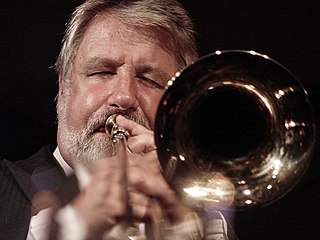
Jiggs Whigham is an American jazz trombonist.
James George Hunter, known professionally as Jimmy Rowles, was an American jazz pianist, vocalist, and composer. As a bandleader and accompanist, he explored multiple styles including swing and cool jazz.

John Laird Abercrombie was an American jazz guitarist. His work explored jazz fusion, free jazz, and avant-garde jazz. Abercrombie studied at Berklee College of Music in Boston, Massachusetts. He was known for his understated style and his work with organ trios.

The Healing Game is the twenty-sixth studio album by Northern Irish singer-songwriter Van Morrison, released in 1997 by Polydor. It reached the Top Ten in four countries, and the Top Twenty in three more. Following two overtly jazz albums, it saw Morrison adding blues and a pop sensibility. It is the only album recorded after 1980 which Rolling Stone judged to be among his ten best, calling it "a clear highlight of his mid-period discography".
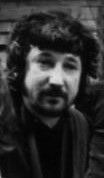
Richard Edwin Morrissey was a British jazz musician and composer. He played the tenor saxophone, soprano saxophone and flute.
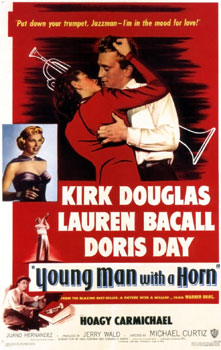
Young Man with a Horn is a 1950 American musical drama film starring Kirk Douglas, Lauren Bacall, Doris Day, Hoagy Carmichael, and Juano Hernandez. Directed by Michael Curtiz, it was based on the 1938 novel of the same name by Dorothy Baker inspired by the life of jazz cornetist Bix Beiderbecke. The film was produced by Jerry Wald, and its screenplay written by Carl Foreman and Edmund H. North.
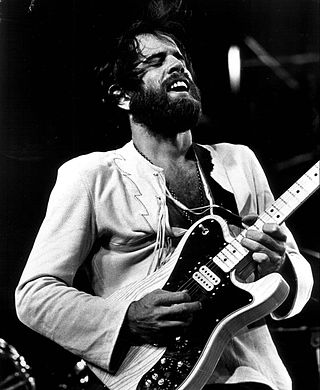
Joe Beck was an American jazz guitarist who was active for over 30 years.
Harry Percy South was an English jazz pianist, composer, and arranger, who moved into work for film and television.

Chet Atkins in Hollywood is the ninth studio album recorded by American guitarist Chet Atkins, released in 1959. The title takes its name from the fact that Atkins recorded it in Hollywood. The lush string arrangements are by Dennis Farnon. Atkins later re-recorded this album in his home studio, using the orchestra tapes from the Hollywood session. The original LP lists Atkins as the producer, the 1961 reissue lists "... with Dennis Farnon and his orchestra" and also lists Dick Peirce as producer.

Guitar Sounds from Lenny Breau is an album by Canadian jazz guitarist Lenny Breau that was released in 1968.
James Anthony Richardson is an English jazz and rock bassist and session musician. He was a member of the progressive rock band If.

The Oscar Peterson Trio in Tokyo is a live album by jazz pianist Oscar Peterson and his trio, released in 1972. It was reissued in 2005 by Columbia Japan with a revised track sequence as Last Trio: Oscar Peterson in Tokyo.
"New Orleans" is a 1932 popular song written by Hoagy Carmichael. The song is now considered a jazz standard, along with several other Carmichael compositions such as "Stardust", "Georgia on My Mind" and "Lazy River".
"Baltimore Oriole" is a 1942 song written by American composer Hoagy Carmichael with lyrics by Paul Francis Webster and Carmichael. Carmichael said it was his favorite of all the songs he had written.
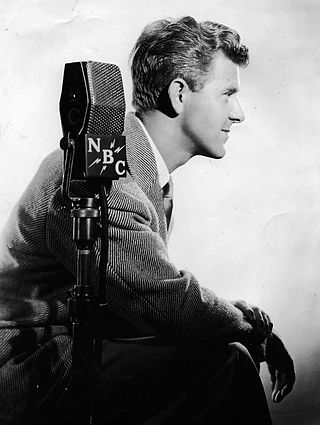
Charles "Bud" Dant was an American musician, arranger and composer. In the 1930s, he attended and graduated Indiana University's School of Music. Jazz composer Hoagy Carmichael had persuaded Dant—who at that time had his own "Bud Dant Collegians" danceband—to come to IU to study at their School of Music. At that time, Carmichael did not know how to read or write music. The two friends met one day in 1927 at the school's Book Nook restaurant, where Carmichael played the first several bars of a song he had conceived—a jazz chorus. He asked Dant to write an arrangement right there in the Book Nook restaurant—this was the first time the song Stardust, which at the time was called "Star Dust," had ever been written down. According to Dant, the piece was originally a peppy jazz song and recorded in 1927, but in 1928, a slower version was written out by Dant and Carmichael. The piece was recorded with Carmichael and others at the Gennett Records studio in Richmond, Indiana. In 1929, Mitchell Parish wrote lyrics to the song. Stardust, an idiosyncratic melody in medium tempo, became an American standard, and is one of the most recorded songs of the 20th century, with over 1,500 total recordings.
References
- 1 2 Murph, John (1 September 2003). "Stark Reality: Now is Starkers! - JazzTimes". JazzTimes. Retrieved 1 December 2018.
- ↑ "Unsung: Stark Reality Now".